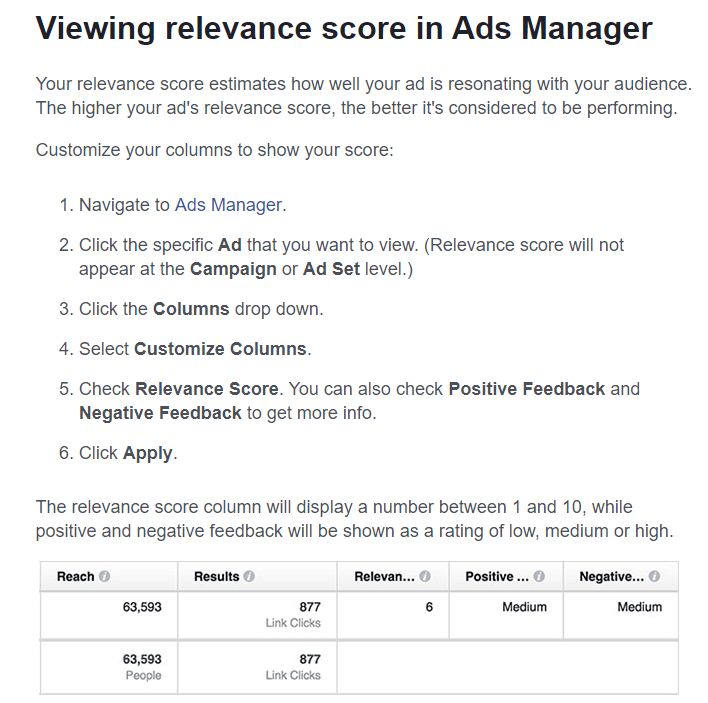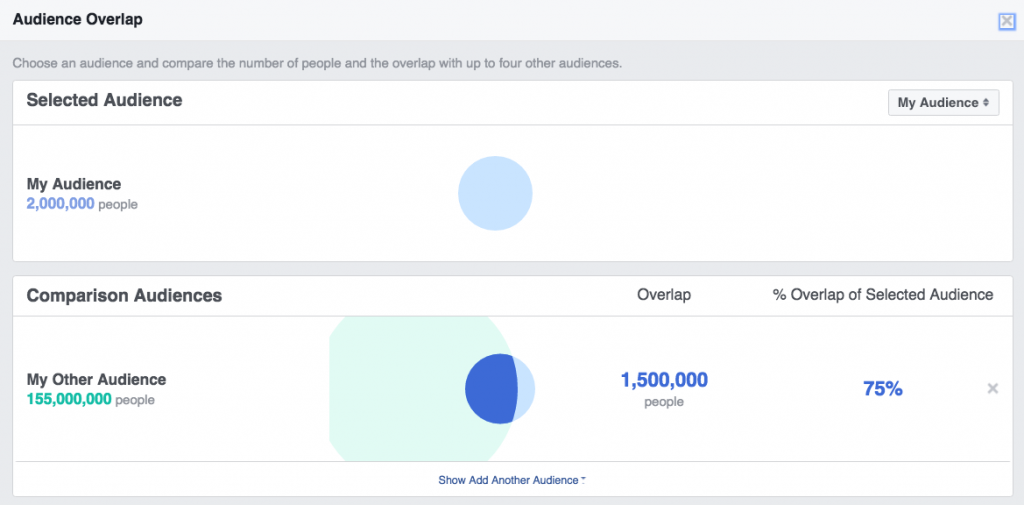Marketing costs are a big chunk of every online store’s monthly budget. You can’t make money without spending it right? But, to paraphrase another popular cliche, you also can’t put all your eggs in one basket. To ensure you are marketing across platforms, you need to stretch that budget without compromising on sales, and where better to start than the second biggest traffic driver: Facebook.
But Facebook ads, if not optimized correctly, can start to chew into your ad-spend faster than you can say ‘checkout!’ In this post we look at 8 ways you can lower Facebook ad costs, without compromising on sales.
1. Take Advantage of Facebook’s Video Reach
The first thing you should be doing to cut your Facebook advertising costs is to use video in your ads. We know that Facebook prioritizes video content and therefore video enjoys a far bigger reach than other forms of content ads as they generate higher impressions as a whole. Because of this bigger impression share, even if your costs stay the same, you will improve your ROIs.
This doesn’t mean you have to spend a lot of money producing video to get an awesome reach, we’ve seen amature mobile phone videos get reach in the millions. This also doesn’t mean you should be scrapping your image ads altogether as, if I may play devil’s advocate for a moment, it is also important to consider what niche or product you’re selling as explained by James Beattie:
However, if your costs are high and you want to lower them and haven’t tested Video, you could be very pleasantly surprised by the results and therefore it’s well worth a test campaign.
2. Improve Your Ad Relevance Score
If your campaign costs are getting high, one of the first things you should check is your relevancy score. Facebook relevance score is similar to Google AdWords’ quality score. It’s a metric by which Facebook measures the quality of your ad based on how relevant it is. Simply put, Facebook measures how relevant your ads are overall, by their quality and engagement rates to give you the ‘Relevance Score’ of your ads. This score is super important to your costs as it determines how often Facebook will show your ad, as well as the CPC.
Relevance scores range from 1 to 10, with one being terrible and 10 being awesome. What you’re aiming for to improve your reach and keep your CPCs down is a relevancy score of 8-10. To view your relevancy score, follow these Facebook steps:
If you do have an ad with a lower relevancy score than you would like, here are three things you can do to improve your score:
- Make sure your content isn’t misleading. Using ‘trick’ copy or images (also known as click-bait) to get the clicks in a misleading way hurts your relevancy score in a big way.
- Make sure your targeting is specific. In other words, by narrowing down your targeting to highly-specific audience, you can ensure that more people within your targeting will find your content relevant to them.
- Ensure that your ad isn’t stale. If you have had the same ad for a long time, targeting the same market, it gets stale. This can reduce your relevance score over time as people will be tired of seeing it.
3. Setup Facebook Pixel
If you haven’t already, setting up your Facebook Pixel can help lower your Facebook ad costs. Why? Because it not only gives you access to much more data which in turn helps you segment your targeting and improve your clicks and relevance score as mentioned above, but it also allows you to see which Facebook ads are bringing in the sales, allowing you to optimize those ads for a better ROI (return on investment).
With Facebook Pixel you are able to:
- Run effective retargeting campaigns
- Use data to optimize your ads
- Track your sales
To add Facebook pixel to your Shopify store, Shopify suggests doing the following two simple steps:
If you’re running a WooCommerce store, here’s a helpful step-by-step video tutorial:
4. Cap Your Facebook Ad Bids
If your Facebook ad relevance is on point and you’re getting the ad reach that exceeds expectations but your costs have increased, then capping your Facebook ad bids can help lower your costs. It is in Facebook’s interest to make money and as your ad reaches more valuable audiences who click, they’re going to keep sending you audiences who click.
By using bid caps and rules you can ensure you maintain your performing ads within the budgets you have set. To do this, make sure you’re selecting ‘Manual’ over ‘Automatic’ bidding.
Pro Tip: The most important thing about Facebook bids is that if you choose to bid manually, you should set it to ‘Average’ – as shown in the above image, and not to maximum. Setting to maximum means you will lose the most valuable users within the target audience. Find out everything you need to know to master Facebook bidding for better ROIs with our Facebook Ad Bidding 101 guide.
5. Adjust Facebook Audience Overlap
The next thing you should be asking yourself if your Facebook ad costs are too high is how much audience overlap do you have? Audience overlap simply means you’re targeting very similar audiences and according to Facebook, overlapping audiences can result in poor ad delivery because you have ads that are in essence competing with each other.
Lucky for us Facebook has an Audience Overlap tool that enables us to see if and where audience overlapping is occurring so that it can be fixed for better ad delivery performance and therefore lower costs. To do this, follow these steps:
The tool will then show you where you have audience overlap, and at what percentage.
If, like in the case of the above Facebook example, you have significant overlap you can either consolidate your overlapping assets, or refine or improve your targeting by segmenting further or using Facebook pixel data as discussed in the previous point.
6. Increase Your Facebook Ad CTR
To lower your Facebook ad costs, you need to increase your CTR (click-through rate) of your ad. The higher your CTR, the higher your relevance score will be which will therefore lower your CTRs and ensure you’re paying less for your ads.
[Image Source: AdEspresso]
So how do you increase your CTRs? Here are two tips to get you started:
1. Getting Higher Facebook Ad CTRs By Adjusting Ad Placement
We’ve come a long way from choosing between desktop and mobile. Facebook now offers placement in a variety of feeds and platforms. Instead of choosing ‘Automatic’ ad placement, manually test placements to find the delivery that gets you the highest CTRs.
Not only do you want to ensure you are choosing the right placement for your product, niche and audience preference, but you want to match your placement to your overall objective and your ad content. For example, if you’re using great quality images then multi image display in Instagram could ensure you get more clicks for your money and a higher relevancy score. Or if you have segmented promotions you want to offer, then Facebook messenger ads, that are enjoying awesome ROIs by the way, would be your most cost-effective choice.
Placement is not a one-size fits all. To maximize performance and cost, tailor each ad and adset the each specific placement.
2. Getting Higher Facebook Ad CTRs By Preventing Ad Fatigue
Ad fatigue is a term for when the number of times someone sees your ads causes them to find your content stale, which in turn affects your reach (if they start hiding ads) or your clicks (as they stop engaging with your ads.)
You can prevent this by keeping your frequency low with automated rules. You can set these up through your Facebook ads manager and selecting ‘Create Rule.’ A rule creation pop-up will then allow you to adjust the conditions to select ‘frequency.’ as shown below.
7. Find Your Scheduling Sweet Spot
Not all ad strategies are created equal and not all people are online at the same time. To decrease the chance of you paying for ads that aren’t performing, test when to post. A simple check of your ad stats will tell you when people are engaging with your posts the most, and therefore allow you to set your ads to only be delivered during these peak times.
Say your engagement metrics showed the above data. You would know that Saturday’s brings you the most engagement, while Sunday the least and that your target audience was most active between 9am and 21.00 pm. You can then set your ads to only be delivered during these times.
8. Be More Specific With Your Targeting
The more specific, or targeted, your audience targeting is, the bigger the chance the people you are reaching will not only click your ads, but be interested in the content of the landing page you are sending them too.
By keeping your targeting too broad, your clicks and your conversations will not be in proportion to your reach. Additionally, your competition, and therefore your bids, will be much higher than if you segment and market to a more specific audience. If, for example, you target ‘woman age 18-55 who like fitness’, your competition will be a lot higher than if you were targeting ‘woman age 18-23 who like yoga fitness and live in Sydney’.
Not to mention this kind of targeting then ensures your ads have a higher quality score which as we now know, decreases the cost of your ads while ensuring a higher success rate.
—
I hope these tips help you keep your costs down and your sales up! If you have some tips of your own or further questions about specific Facebook ads you’re running, feel free to post them in the comments below.
If you’re looking to learn more about Facebook advertising check out Bigcommerce’s complete guide to advertising on Facebook.

Nicole is a content writer at StoreYa with over sixteen years experience and flair for storytelling. She runs on a healthy dose of caffeine and enthusiasm. When she's not researching the next content trend or creating informative small business content, she's an avid beachgoer, coffee shop junkie and hangs out on LinkedIn.
Recommended articles
 Facebook Ads for eCommerce: 16 Strategies, Examples & Tips
Facebook Ads for eCommerce: 16 Strategies, Examples & Tips
 How to Build a Winning eCommerce Ads Strategy
How to Build a Winning eCommerce Ads Strategy
 Google Ads for eCommerce: Everything You Need to Know
Google Ads for eCommerce: Everything You Need to Know
 10X Your Traffic with PPC Management Software
10X Your Traffic with PPC Management Software
Comments
Powered by Facebook Comments











